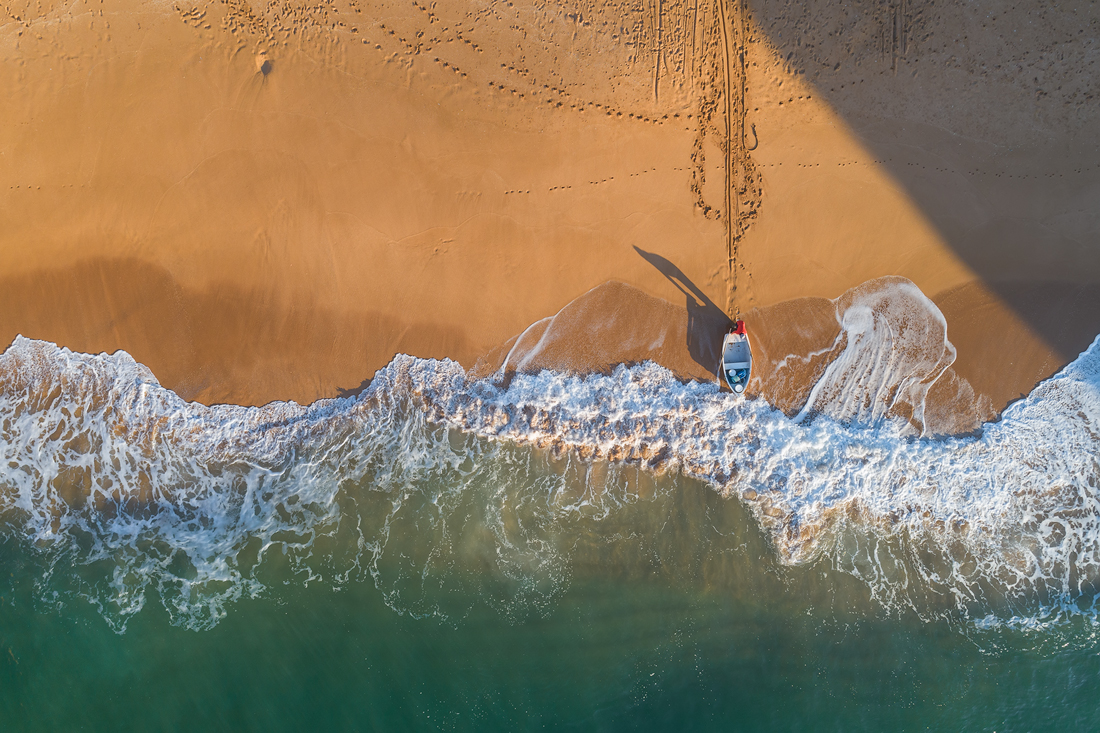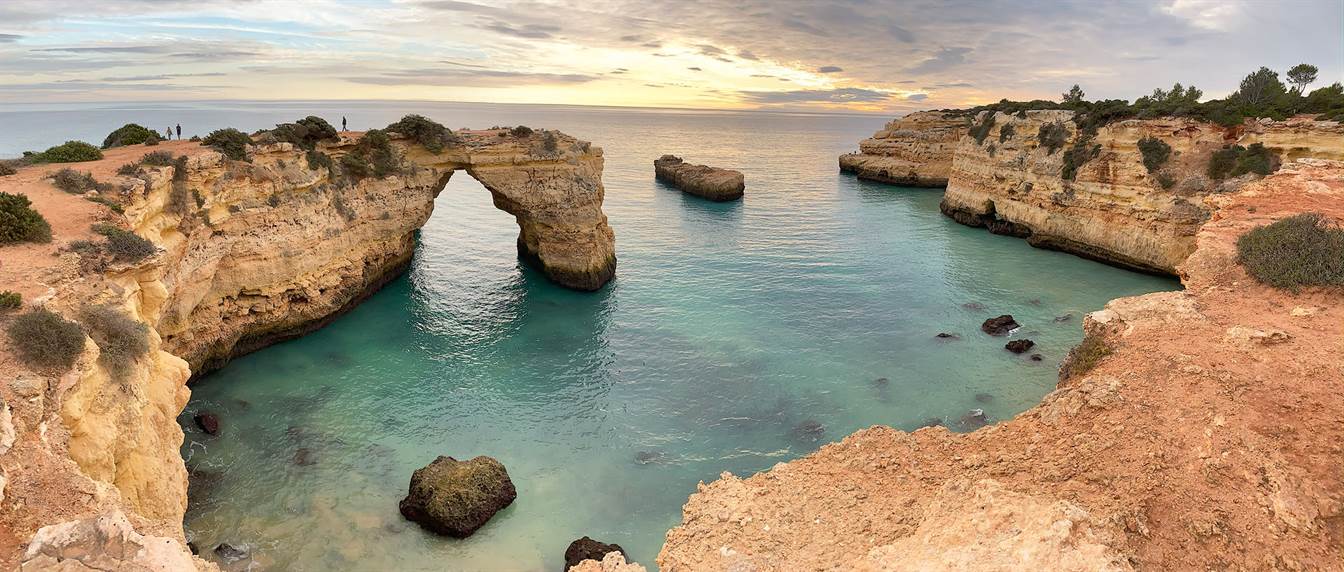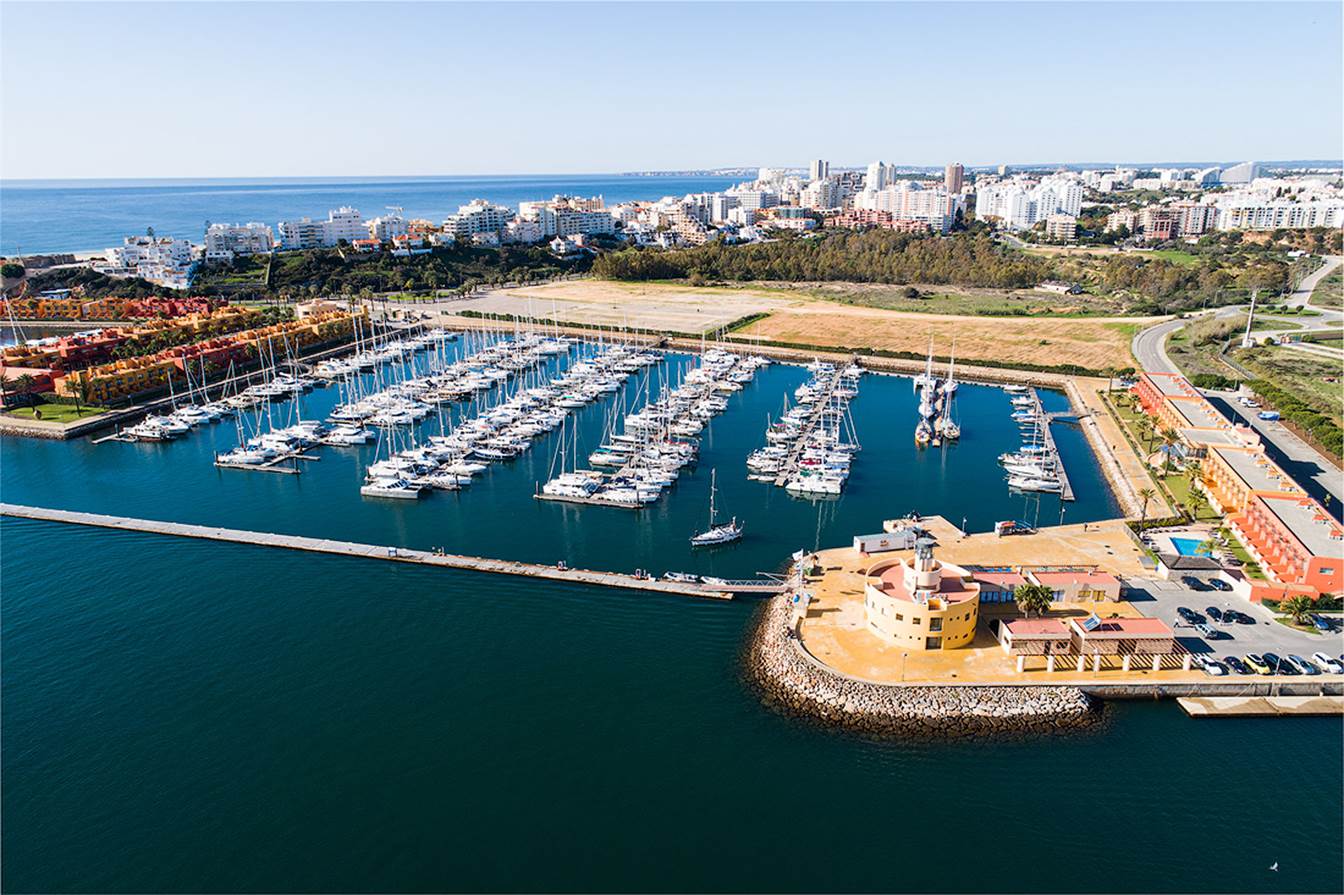563.0 Kg CO₂ eq per traveler
2026
Pending
Information
Photographic Inspiration
Before starting, it’s worth imagining the scene you’re about to explore:
The Algarve is the sunny southern coast of Portugal, a strip of about 160 km where golden sandy beaches alternate with jagged cliffs and sea caves, and behind them rise green hills dotted with orchards.
This region is “a mosaic of dramatic cliffs, sandy coves, and whitewashed villages” that captivates with its natural beauty, cultural heritage, and slow rhythm. It’s known as the “golden coast” for its ochre-toned rock formations and blue seas.
Exploring it with a camera in hand invites you to seek soft light at sunrise on beaches like Camilo, or fiery sunsets in front of lighthouses like the one at Cabo de São Vicente. The goal of this itinerary is to make the most of that unique light to capture seascapes, historic fortresses, and villages that preserve their maritime essence.
How to Get to Lagos
To begin the photographic journey, you can access the Algarve from different cities on the Iberian Peninsula. Below is a summary of the most common options to reach Lagos and set up your base camp at the hotel:
From Madrid
Train + bus: The most comfortable way is to take a high-speed train (AVE, OUIGO, iryo or Renfe) from Madrid‑Atocha to Sevilla‑Santa Justa. These trains take between 2 h 41 min and 3 h 11 min to cover the 390 km that separate the two cities. Once in Seville, you can connect with FlixBus or ALSA buses departing from Plaza de Armas station or Santa Justa to Lagos. Direct buses take between 3 h 50 min and 5 h 15 min and have several daily departures (checkmybus.com).
Direct bus: FlixBus operates a direct Madrid‑Lagos service that is the cheapest but longest. The company states the journey takes around 12 h 10 min, with up to five daily departures and fares starting from around €56 (global.flixbus.com).
Flight to Faro or Lisbon: Another option is flying from Madrid to Faro Airport (some low-cost airlines like Ryanair offer direct flights). The flight takes approximately 1 h 24 min (trip.com). From Faro, continue by bus or train to Lagos (see “From Lisbon” section). There are also frequent Madrid‑Lisbon flights (approx. 1 h 15 min), and from there you can take a train or bus to Lagos.
From Seville
Direct bus: FlixBus and ALSA services connect Seville with Lagos several times a day. The trip from Plaza de Armas station in Seville to central Lagos takes between 3 h 50 min and 5 h 15 min depending on the company and schedule (checkmybus.com). Prices usually range from €20 to €30, with morning and afternoon options.
Rental car: If you prefer to drive, the route along highway A‑49 (in Spain) and A‑22 (in Portugal) takes about 3 hours. Note that some Portuguese highways have electronic tolls, so it’s advisable to check the payment system.
From Lisbon
Train: Comboios de Portugal (CP) offers Intercidades or Alfa Pendular trains from Lisbon to Lagos with a connection at Tunes station. The full journey takes about 4 h 10 min and tickets start from €24.15 (lagosportugalguide.com). Booking in advance is recommended to secure a seat.
Bus (Rede Expressos or FlixBus): These bus companies operate direct services from Lisbon to Lagos. The fastest buses take 3 h 40 min and tickets generally cost between €7 and €20 if booked in advance (lagosportugalguide.com). FlixBus offers very economical options, though slightly slower (around 3 h 50 min) (lagosportugalguide.com).
Car: Driving from Lisbon via A2/A22 is the fastest option (around 2 h 40 min), though tolls apply (lagosportugalguide.com). The coastal road N120 offers a more scenic route that takes about 3 h 30 min (lagosportugalguide.com).
These options allow you to tailor the trip to your budget, availability, and preferences. Once in Lagos, the selected hotel will be your base to explore the photographic locations described in the itinerary
Gear
Tripod, ND filters and polarizers. Bring rain protection for potential splashes during boat rides.
Trip guides
Néstor Rodan
Over two decades ago, I began my journey behind a television camera. That was my first encounter with visual storytelling—the power of conveying emotion and meaning through…




